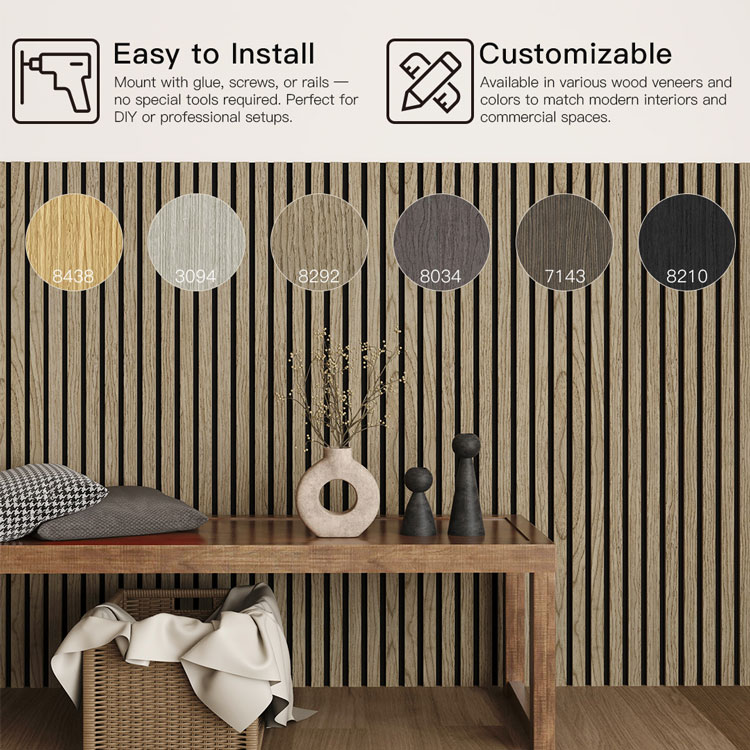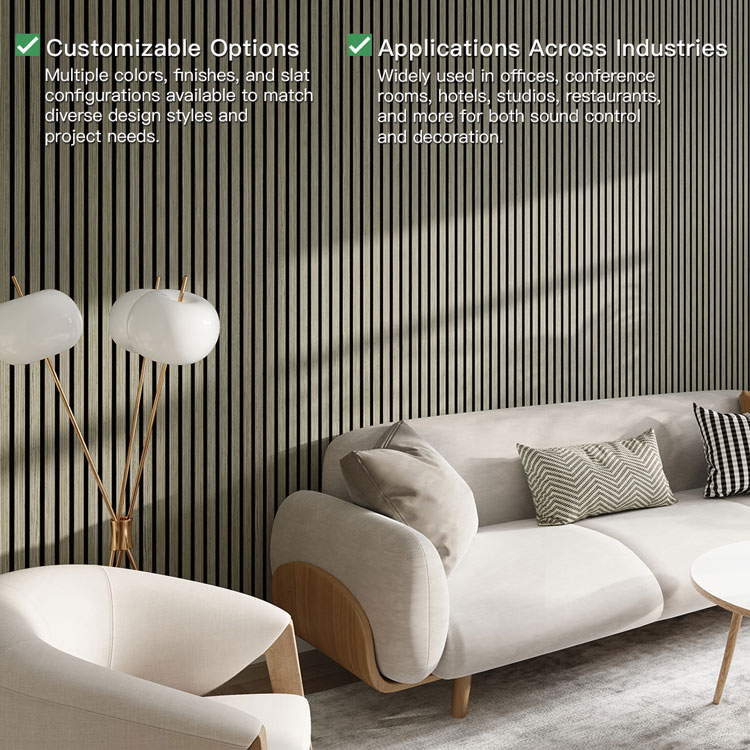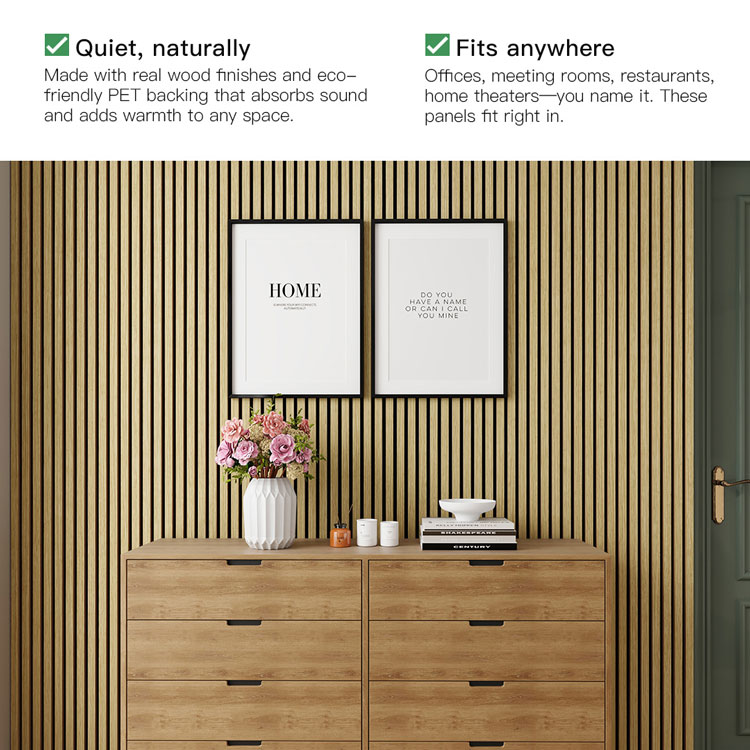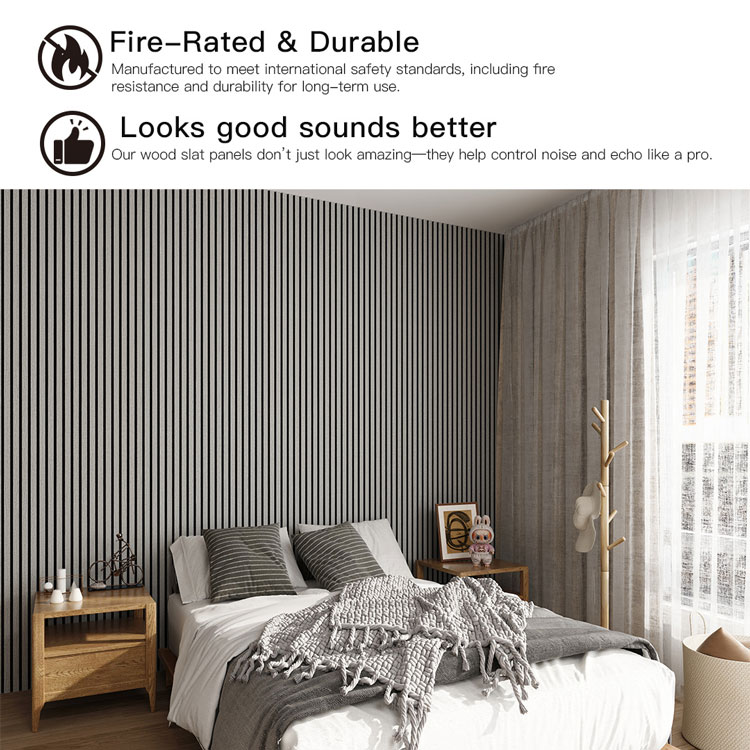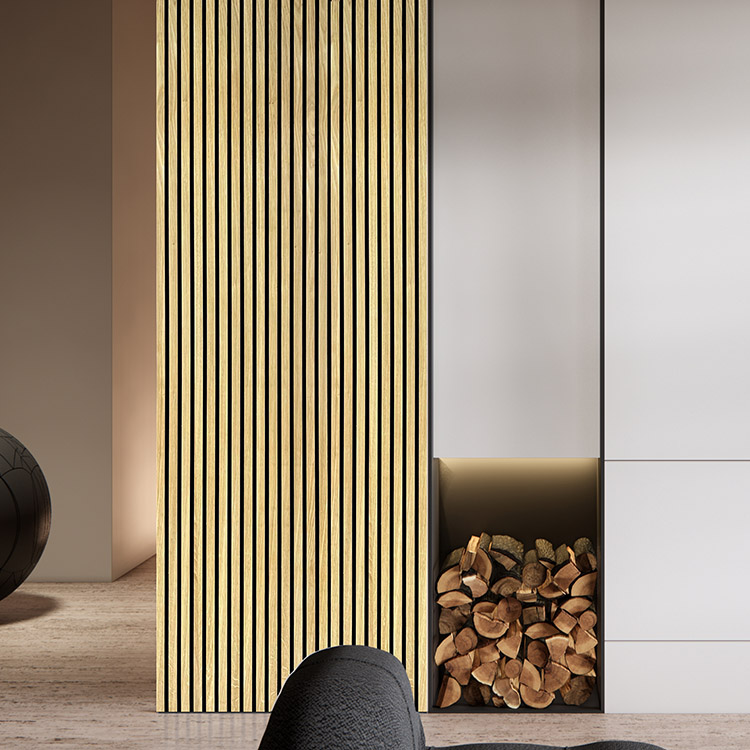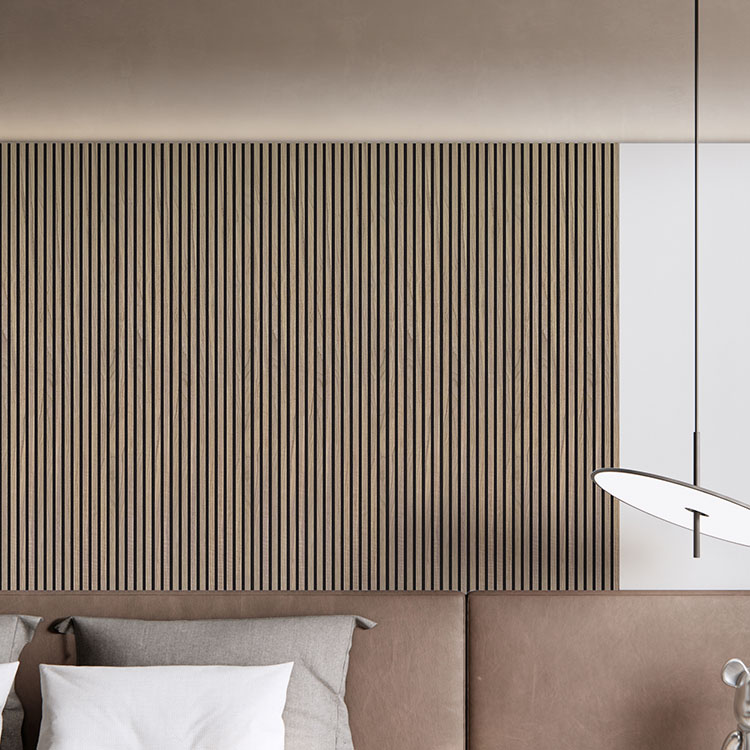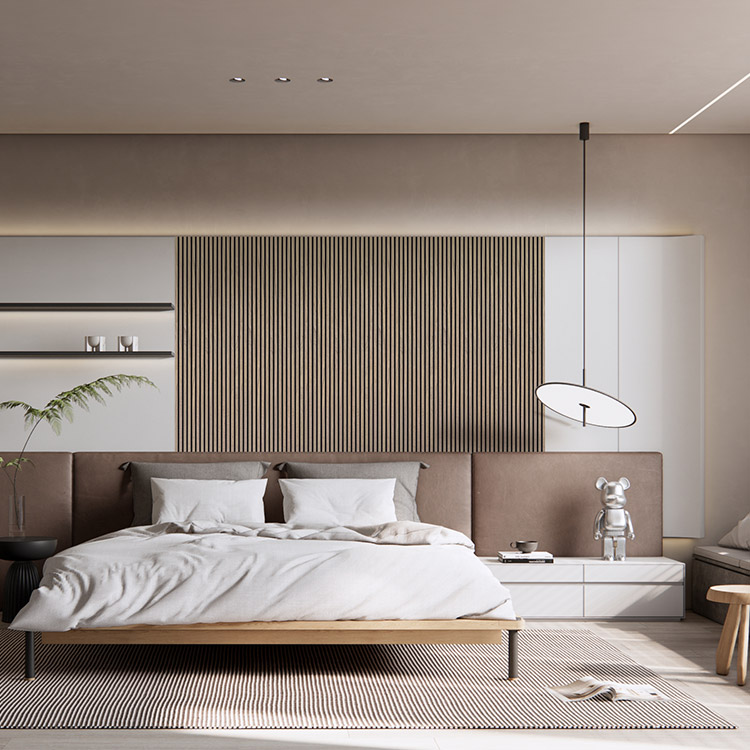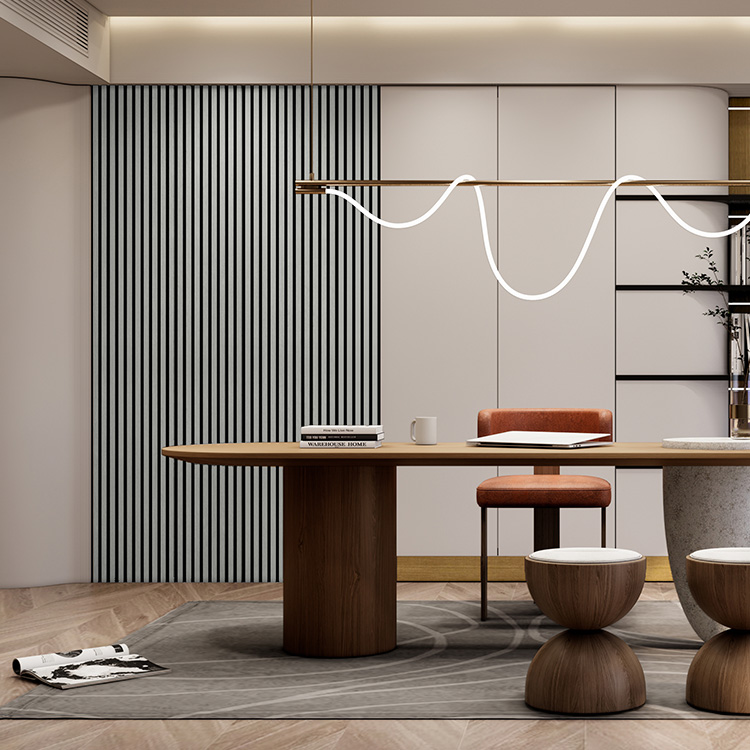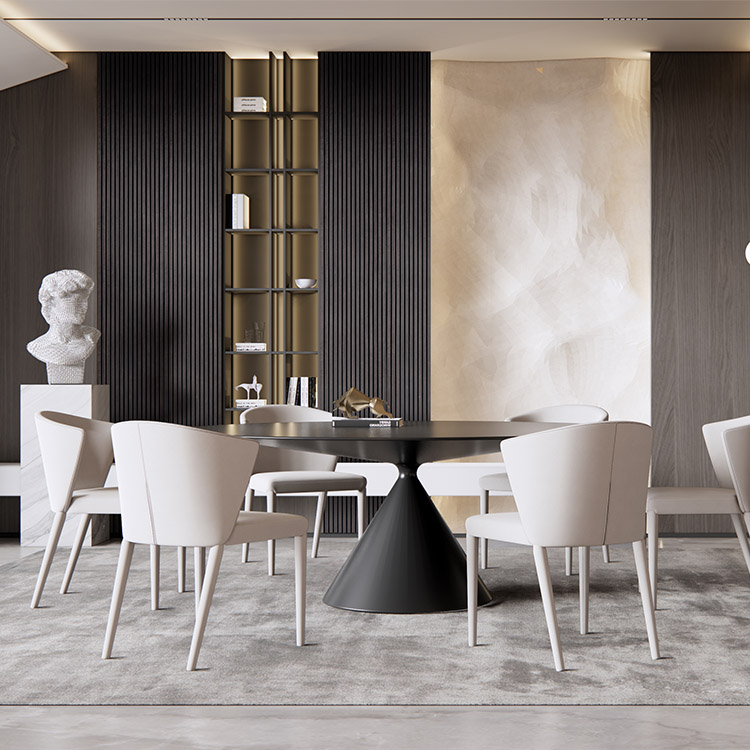In a world full of noise — from traffic and construction to household chatter — having a completely soundproof room feels like the ultimate luxury. Whether it’s a music studio, home theater, office, or recording space, a soundproof environment ensures clarity, privacy, and peace.
But what exactly makes a room “ultimate” in terms of soundproofing? In this article, we’ll explore the materials, techniques, and acoustic design principles that define a truly sound-isolated space — and how Guangdong Leeyin Acoustics, a global leader in wood slat acoustic panels, provides professional solutions that combine high performance with modern aesthetics.
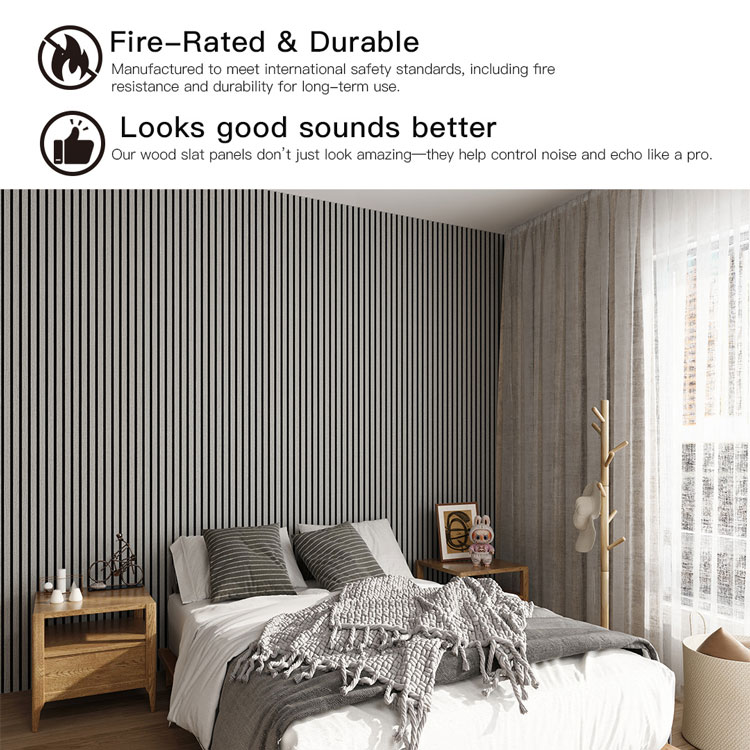
Understanding the Goal of a Soundproof Room
A soundproof room aims to prevent sound from entering or escaping. This differs from “sound absorption,” which focuses on reducing echo inside a space.
The ultimate soundproof room effectively:
-
Blocks external noise (e.g., traffic, machinery, voices)
-
Prevents internal sound leakage (e.g., music or speech traveling to other rooms)
-
Controls echo and reverberation within the space
To achieve this, several layers of materials and construction techniques are combined to isolate and absorb sound energy at multiple frequencies.
The 4 Key Elements of an Ultimate Soundproof Room
1. Mass and Density
The more mass a structure has, the better it can block sound. Dense materials create barriers that sound waves struggle to penetrate.
Common high-mass materials:
-
Multiple layers of drywall
-
Mass Loaded Vinyl (MLV) barriers
-
Cement board or plywood layers
For spaces that also require visual appeal, Leeyin’s wood slat acoustic panels can be installed over sound-blocking walls, enhancing aesthetics without compromising performance.
2. Decoupling Structures
Sound travels through vibrations. If walls, floors, and ceilings are directly connected, vibrations easily pass through.
Decoupling separates surfaces to break that vibration path.
Techniques include:
These systems create “air gaps” that reduce structure-borne sound transfer — an essential feature of any high-end soundproof room.
3. Absorption Materials
Even after isolating walls, sound can still bounce within the room. This is where acoustic absorption comes in — turning harsh reflections into soft, controlled acoustics.
Leeyin acoustic panels are ideal for this purpose.
Each panel features:
-
Natural wood slats for design versatility
-
High-density PET felt backing for superior sound absorption
-
NRC values up to 0.9, ensuring minimal echo and reverberation
These panels are perfect for studios, cinemas, and offices where both functionality and appearance matter.
4. Sealing and Airtightness
Even the best walls fail if sound leaks through gaps. Small openings around doors, windows, or sockets can let in surprising amounts of noise.
Professional tips:
-
Use acoustic caulk or foam sealant for all joints
-
Install soundproof doors and double-glazed windows
-
Add rubber gaskets around frames to block air and vibration leaks
At Leeyin, we often recommend combining structural sealing with surface treatments like our acoustic panels to achieve a perfect balance between isolation and clarity.
Building the Ultimate Soundproof Room: Step-by-Step
-
Plan the room layout – Choose a quiet location away from mechanical or traffic noise.
-
Construct double walls and ceilings – Use decoupled framing for isolation.
-
Add mass-loaded materials – Layer drywall or vinyl barriers for sound blocking.
-
Seal every gap – Use acoustic sealants and weather stripping.
-
Install Leeyin acoustic wall and ceiling panels – Control internal acoustics with style and performance.
-
Add soft furnishings – Rugs, curtains, and upholstered furniture enhance absorption.
The Role of Leeyin Acoustic Panels in Soundproof Design
While heavy construction provides isolation, Leeyin’s acoustic wall panels refine the sound inside the room. Our panels combine modern wood aesthetics with technical acoustic engineering, delivering both performance and elegance.
Why architects and designers choose Leeyin:
-
Wide range of wood finishes: Oak, Walnut, Teak, Black Ash, and more
-
Eco-friendly PET felt backing made from recycled materials
-
Certified to E0 and FSC standards
-
Easy installation using screws or adhesive
-
Ideal for studios, cinemas, offices, conference halls, and residential interiors
When integrated into a soundproof design, Leeyin panels not only improve acoustic comfort but also elevate the overall space with timeless beauty.
